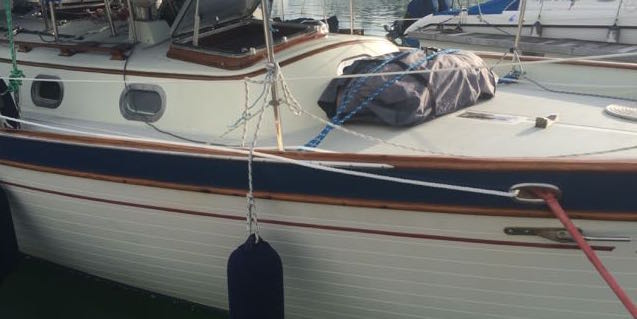Firs off, I keep getting this message on my phone. Any Thai readers out there?
So after the trip to the Soi Dog home, I had a lazy Tuesday, Wednesday was spent planning the work, and reading a big book about anchoring, I never thought you could fill a book on this subject, but so far I have read a third of the book, and we still haven’t got to the anchoring bit. Fascinating learning the history of Anchors, Chain, Windlasses etc, well at least I think so. For example, “The bitter end” is very much an anchoring term that found its way into common use.
Yesterday and today I got stuck into fitting the all the new kit onto the boat. I modified the old anchor bracket on the stern to fit the new kedge anchor. Then I attached the new lifebuoy with it’s hi-tech fancy LED light that turns on when it hits water. My old one used to turn on when it was the right way up, as a spring and gravity comprised the switch, however in a big sea, the boat would sometimes ride up on a wave quickly and the light would come on briefly making us jump in the cockpit as if a searchlight had been shone on us. I also repaired the life-sling and its case as it had some UV damage. Just need a danbouy to complete the safety gear. The new fenders now hang, looking very smart.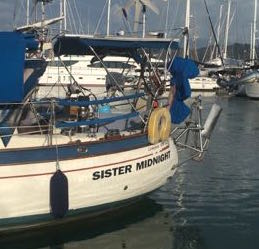
I also restocked our flare container and removed the oldest flares. Once the stern of the boat was sorted, it was up the mast to fit a new halyard, put the missing screw into the wind sensor, and recalibrate it.

The new green halyard is there for emergencies really, but can be used for various things like holding up a canopy, climbing the mast, or swinging small children around.
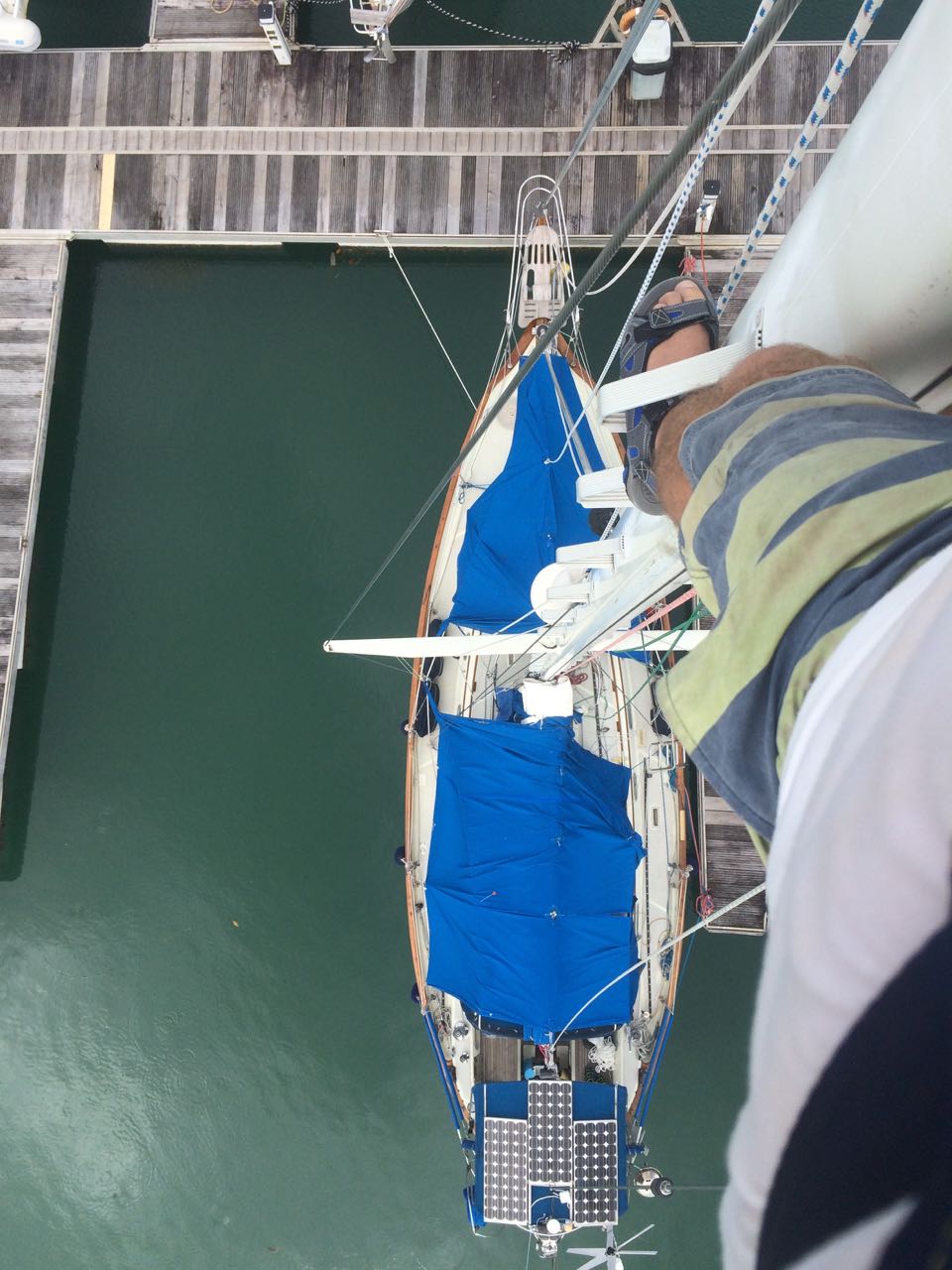

I also replaced the blocks (pulleys) on the spreaders which are used to fly the visiting flags, or courtesy flags as they are called, along with their halyards. These halyards hoist other flags and pendants as well, like signal flags, should I ever need to “expect anyone to do their duty”. Protocol says you must fly a little flag for the country you are visiting when you hit their waters. Flag etiquette can get quite confusing, I have a club flag for the Cruising Association, and I still can’t work out where to fly it, every position on the boat has a status and priority, club ensigns should be flown from the top of the mast, something thats hard to do on a sailing boat, flying it on the port spreader is a no no, and to demote it to a lower status than the courtesy flag, flown on the starboard side is also a no no, so I’m up for suggestions. I have never met anyone from the flag police, but I’m told the are a serious bunch, not to be messed with 😉
I fixed the staysail furler, which I had trouble with when I lost the staysail over the side. When I had re-hoisted, after recovering the lost halyard, I had put a twist before the twist preventer at the top of the furler. This had now become off centre, but was easy to fix. Just need a sail to put on there now.
Preventers
Skip this if you don’t know what a preventer is, but basically it stops the boom flying around doing damage when you the wind catches the wrong side of the mainsail. It can be very destructive, to the crew and the boat.
To answer Tim’s comment, I have a dutchman system which is a combination of Kicking Strap/Vang (UK/USA names) and also acts as a preventer. This has worked well so far, I need to tune it better, but this is fine for daytime runs, in lighter winds, were it’s unlikely for the boom to hit the water. The main worry about the Dutchman is that it attaches to the boom around the midpoint, so if you roll on a fast run, and a bit of mainsail hits the water, the forces on the boom can be quite strong, and I have heard of booms snapping at the centre point because of this. So for this reason I have gone for a belt and braces solution that allows me secure the end of the boom as well, in a more traditional manner. After consultation with members of the baba internet group, and reading up on other ideas, in particular one by Brion Toss, I have implemented, or started to, a system that should prove useful.
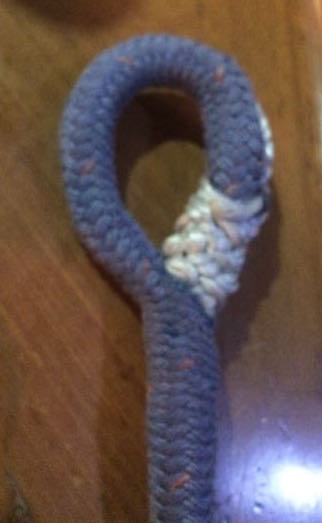
First I had to learn how to do a eye splice in braid on braid rope, as you can see I need to work on this a bit more. But I can see now, how once I get a proper fid, and take a little bit of time to mark my cuts properly, then it should be a doddle.
So basically I have a strap around the end of the boom, and on each side a line of rope runs from this to the end of the boom near the gooseneck connection at the mast. 
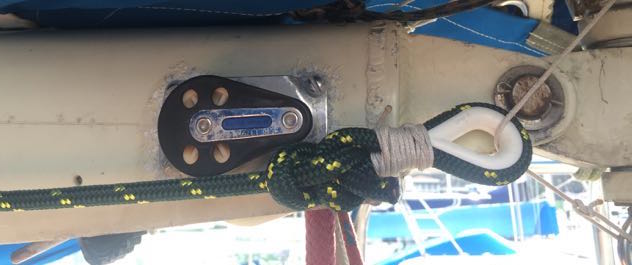
The strap is there to spread the load around the boom, rather than have it focused on a couple of pop rivets, or self tappers that would normally hold a pad eye on. The eyes at the mast end allow me to hook them onto a cleat like prong, which I will fit later, once I have made the eyes proper. Another little trick is some elastic will be sewn into the outer braid that will cause the lines to contract and stay snug on the cleat/prong.
These lines aren’t enough on their own to do much, but a second line, made of 12mm 3 strand nylon runs from near the cockpit, 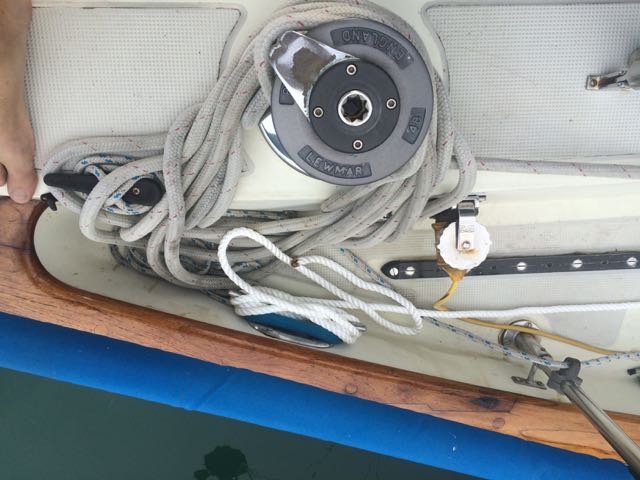
up to the forward hawse pipe, out over the side and back to the stanchion just aft of the mast, or most aft stay.
here it is clipped to the stanchion with a carabiner.
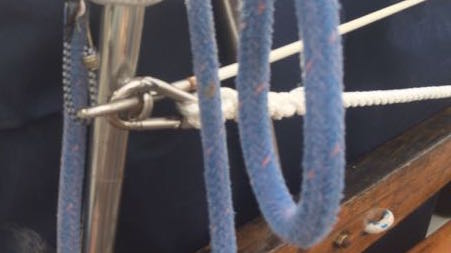 So I have a line either side of the boom, and a line running the length of each side of the boat.
So I have a line either side of the boom, and a line running the length of each side of the boat.
To operate the preventer, you walk to the mast, unclip the eye from the boom and attach it to the carabiner on the stanchion on that side, retire to the cockpit and tighten. I haven’t tried it yet, and I don’t know if I can leave them both connected at the same time, or if I need to go to the mast if I want to Jibe. we shall see. The nylon is designed to put some elasticity into the system, so the shocks if the boom hit the water can be absorbed a bit easier. I need to do proper eyes, and the elastic bit, but the system is good to go for now, so I will test it in a few days time when we head out. Also, the line not in use, which I intend to call the ‘Lazy Preventor’ can be used as a forward stay for a poled out genoa, when running.
As I write this now, there are two converging thunderstorms heading right at us. The sky is full of lightning and I have unplugged all the aerials, Im expecting one heck of a storm.
Last night we sat in the bar here and I had a coconut, which is really nice, don’t know what took me so long. Also it looks like a little house or tent, which is nice.
Today we walked around the back streets of the village and made friends with some local kids. They were so sweet, they practiced their english on us, which amounted to “Hello, What is your name” “My name is…” , which was great for such young kids, much better than my Thai so far. 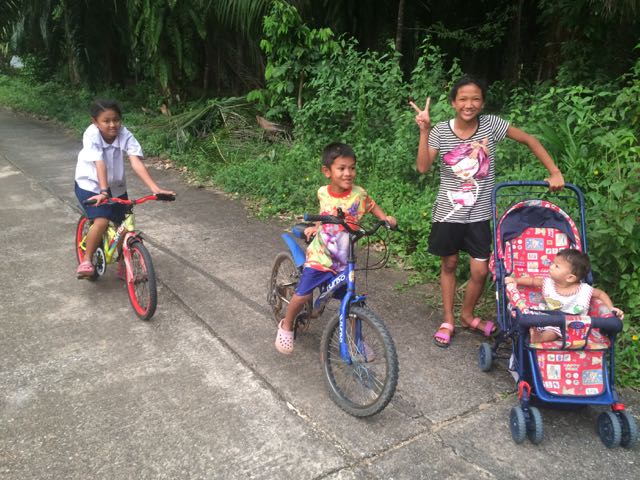
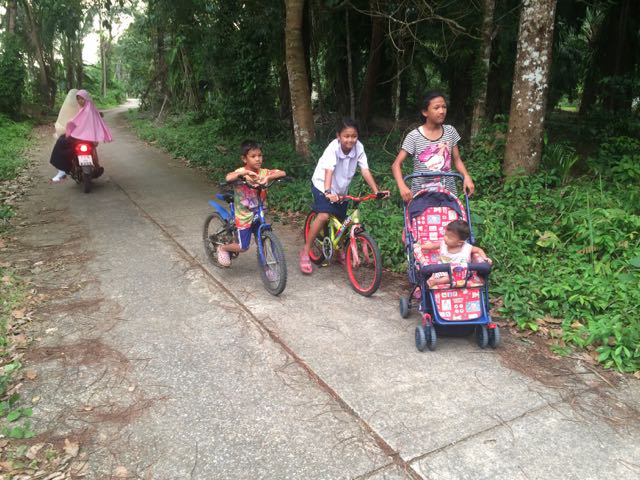 When they left us the older girl shouted to us “We love you” which was wonderful. The people here are very kind and generous, probably my favourite country so far.
When they left us the older girl shouted to us “We love you” which was wonderful. The people here are very kind and generous, probably my favourite country so far.
Tonight we checked out a local Thai eatery down on the waterfront just a few minutes walk from the Marina. Excellent, cheap and delicious.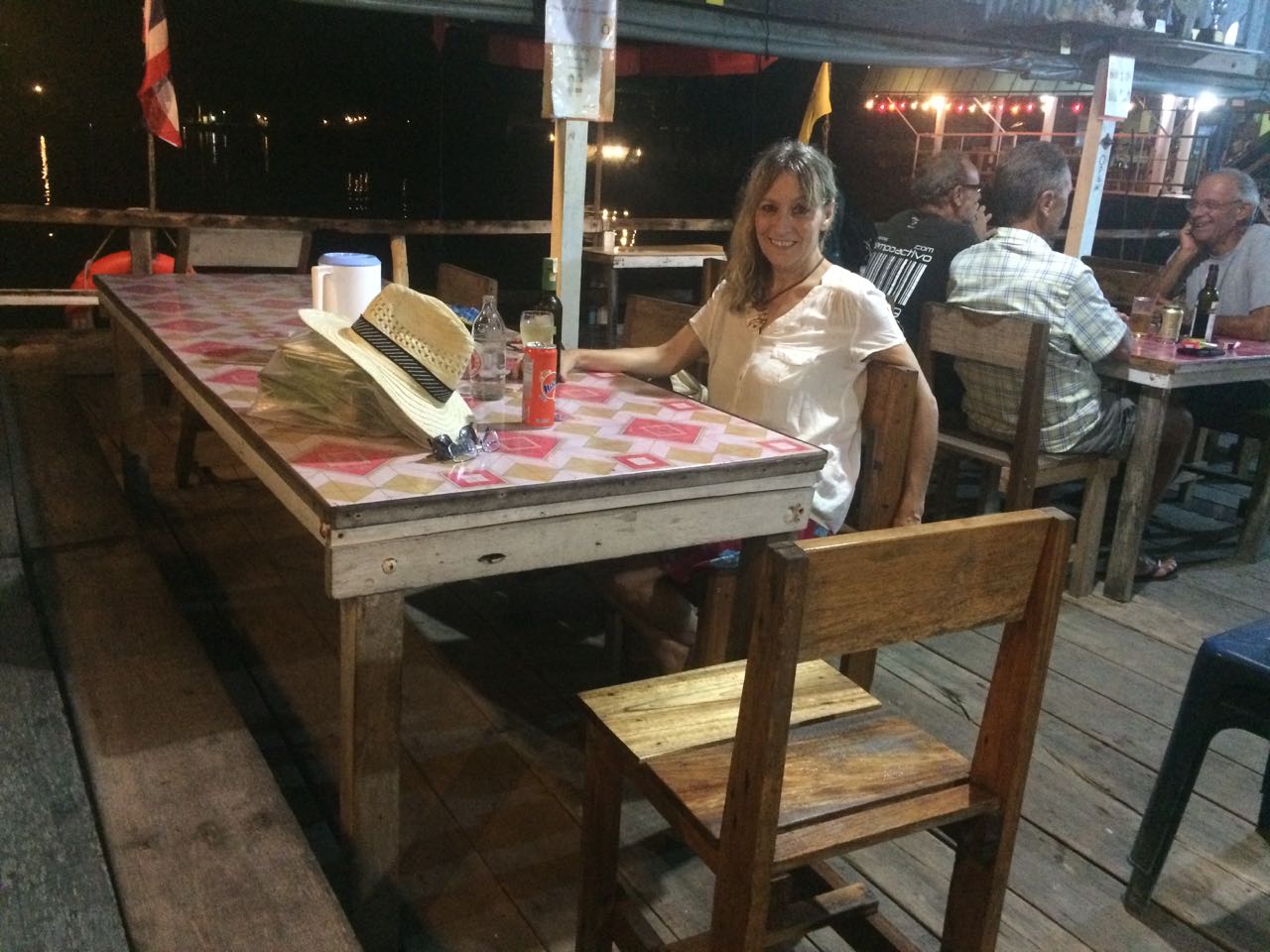
Paul C.


